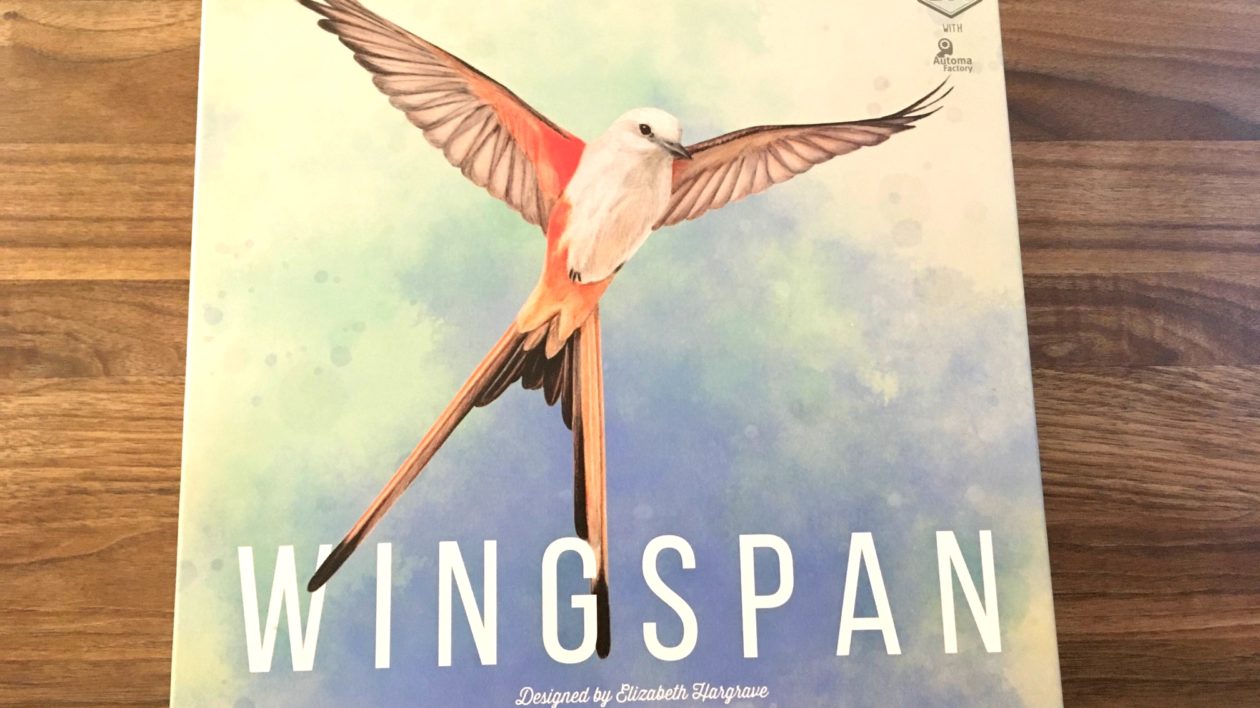By Ken Keffer
Contributing writer

Last year, Stonemaier Games created quite a flutter within both the birding and board gaming communities with the release of Wingspan. The game, by designer Elizabeth Hargrave, was an instant hit. It sold out a 10,000-unit printing before I even had a chance to jump on the bandwagon. For much of 2019 and early 2020, unopened Wingspans were being sold on the second-hand market for prices that fell somewhere between black-market bathtub kidneys and Tickle Me Elmo.
As 2020 progressed, I continued to see social media posts of friends locked down with loved ones, building cherished memories as they competed head-to-head growing their Wingspan flocks to victory. I recently joined the 13,000-member Wingspan Facebook Group.
My initial impression of Wingspan is that it is visually stunning. A cover-worthy specimen, Oklahoma’s state bird, the scissor-tailed flycatcher, soared to the top of the box.
Other bird stars on the box include the ruby-throated hummingbird, the eastern screech-owl, the western tanager and the Carolina chickadee. These are some of the most powerful cards when it comes to game play, and I hope this was a subtle hint that was curated into the layout.
For board game enthusiasts, Wingspan is a “competitive, medium-weight, card-driven, engine building board game,” according to the Stonemaier Games webpage. The game can be played with 1–5 players, ages 10 years to adult. Games take roughly 40-70 minutes to complete.
For bird folks, the objective of Wingspan is to populate your habitat-based playing board with a diversity of bird species. Points are accumulated for the birds, eggs, cached foods, tucked cards and various bonus scenarios.
Each player gets 26 turns to create the highest scoring nature preserve possible. Each turn is kicked off with one of four actions: play a bird, gain food, lay eggs or draw bird cards.
The engine-building design of Wingspan means early plays can be maximized throughout the
A couple of features that are especially helpful for new gamers are the online tutorial videos and optional template scenarios used for starting a game. The videos by Watch It Played and Quackalope Games help navigate the logistics of a turn. The templates map out the first four turns of a game helping ensure you’re on the right track.
Cumulatively, the deck of cards serves as an introductory field guide to 170 species of North American birds. The natural history of each species is reflected on each bird card.
Habitat and food preferences are noted, as well as information about nest types and relative clutch sizes.
The Wingspan team clearly did their homework. Brown-headed cowbirds are notorious in the birder world for their egg dumping strategy, and this is reflected in game. Instead of building a nest and laying eggs, the action for the cowbird card is to lay an egg on a different cup nesting species card. The wingspans of birds are also shown, and these become important for some of the bonus cards.
The range maps are meant only to reference which continent the birds are found on. This general range reflects migratory species and birds like barn swallow and osprey that have wide distributions.
Each bird species has a fun fact included on the card. These don’t impact the game at all, but the naturalist and environmental educator in me beams with pride every time my wife reads aloud a nature nugget she finds especially fascinating.
For board gamers, Wingspan is a breath of fresh natural air in the widely popular genera of engine-building games. Many engine-building scenes play out in alternative science fiction realities or medieval times.
For fledgling gamers, birds can be an easily relatable theme, and for experienced gamers, the setting is new and inspiring.
The widespread success of Wingspan will hopefully expand both the tabletop game and natural history hobbies, while providing a bit of cross-pollination between complementary interests.


